Last Updated on June 27, 2023 by Jada Glover
Whether you’re a first-time mom, a seasoned pro, or a lactation consultant, you know that breastfeeding can be both an incredible bonding experience and yet one of the most challenging (and rewarding) aspects of motherhood. From the benefits for both baby and mama to surprising global trends, we’ve compiled 90 fun breastfeeding facts and statistics that will leave you feeling informed (and super inspired!).
20 Interesting Facts and Statistics About Breastfeeding and Breast Milk
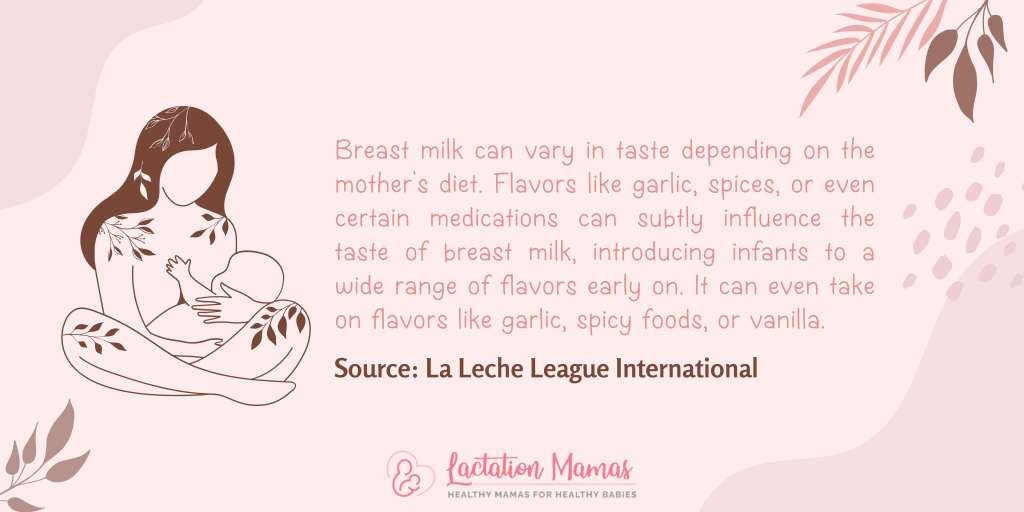
- Breast milk can vary in taste depending on the mother’s diet. Flavors like garlic, spices, or even certain medications can subtly influence the taste of breast milk, introducing infants to a wide range of flavors early on. It can even take on flavors like garlic, spicy foods, or vanilla. (Source: La Leche League International - LLLI)
- Breast milk contains stem cells. Recent studies have found that breast milk contains a small number of stem cells that may contribute to infant health and development. (Source: Frontiers in Pediatrics)
- A phenomenon known as “milk drunk” can occur when babies consume a large amount of breast milk and become drowsy or fall asleep with a blissful expression on their faces. (Source: La Leche League International)
- Breast milk can change color. It might appear bluish or yellowish depending on factors such as the mother’s diet or medications. This color variation is usually harmless and temporary. (Source: KellyMom)
- Some mothers may experience a condition called “phantom letdown,” where they feel the sensation of milk letdown, even when their baby isn’t nursing or if they’re not breastfeeding at all. (Source: Verywell Family)
- Breast milk supply and milk production work on a supply and demand system. The more frequently and effectively a baby breastfeeds, the more milk the mother’s body produces. (Source: American Pregnancy Association)
- Breast milk has natural antibiotic properties. It contains a variety of white blood cells, specifically immune cells called leukocytes. These cells are responsible for protecting the body against infections and diseases. The presence of leukocytes in breast milk provides additional immune support to the infant, as they help fight off pathogens and strengthen the baby’s developing immune system. (Source: Mayo Clinic)
- Breast milk composition changes throughout the day. The levels of fat, protein, and other components in breast milk vary, with higher fat content typically observed in the evening and morning feeds. (Source: La Leche League International)
- Some mothers may experience “letdown” sensations or leakage when they hear a baby cry, even if it’s not their own child. This phenomenon is known as “bystander letdown.” (Source: Verywell Family)
- Breast milk can have different smells, ranging from slightly sweet to almost “buttery.” This variation is normal and can be influenced by the mother’s diet and overall health. (Source: KellyMom)
- Foremilk is the milk available when your baby starts feeding, hindmilk is the milk your baby gets at the end of a feed. Foremilk is not necessarily low in fat: the fat content of the milk that is removed varies according to how long the milk has been collecting in the ducts and how much of your breast is drained at the time. (Source: La Leche League International)
- Breast milk is unique to each baby. A mother’s milk composition can vary between infants based on their needs, adjusting to provide optimal nutrition and antibodies for each individual baby. (Source: Frontiers in Microbiology)
- Dysphoric milk ejection reflex, or D-MER, is a condition that affects some moms who breastfeed or pump milk. It causes sudden and intense negative emotions just before you “let down” or release milk. It’s quick and lasts just a minute or two. One study estimates that between 5% and 9% of lactating mothers experience D-MER. (Source: The Cleveland Clinic)
- Breast milk can have a soapy or metallic taste for some mothers. This may be due to an excess of the enzyme lipase, which breaks down fats, leading to a change in milk flavor over time. (Source: KellyMom)
- The composition of breast milk can change based on the time of day. Research has shown that breast milk produced at night contains higher levels of melatonin, which may help regulate the baby’s sleep patterns. (Source: Nutrients Journal)
- Some women experience an involuntary tingling or pins-and-needles sensation in their breasts when they hear a baby cry, even if they are not the baby’s mother. This is known as the “let-down reflex.” (Source: Science Daily)
- Breast milk can have antibacterial and antiviral properties. It contains substances like lactoferrin and secretory IgA that help protect against infections, acting as a natural defense mechanism for babies against common childhood illnesses. (Source: National Library of Medicine)
- Breast milk is a living fluid. It contains live cells, enzymes, and beneficial bacteria that contribute to the baby’s immune system and gut health. (Source: Journal of Mammary Gland Biology and Neoplasia)
- Some mothers may experience “overactive letdown” or forceful milk flow, causing their baby to gulp or choke while nursing. It can lead to excessive gas or fussiness in the baby. (Source: International Breastfeeding Journal)
- Breast size itself does not determine a woman’s ability to breastfeed or her milk production capacity. Breast size is primarily determined by the amount of fatty tissue in the breasts, which varies among individuals. The ability to produce breast milk depends on the presence of specialized milk-producing cells within the breast tissue, not the overall size of the breasts. (Source: La Leche League International - LLLI)
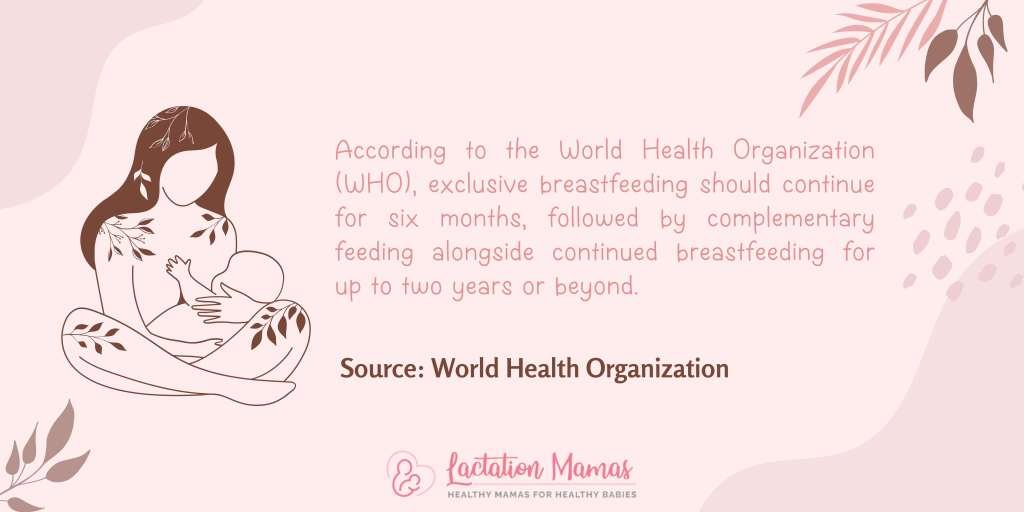
10 Breastfeeding Weaning Statistics
- According to the World Health Organization (WHO), exclusive breastfeeding should continue for six months, followed by complementary feeding alongside continued breastfeeding for up to two years or beyond. (Source: World Health Organization)
- The American Academy of Pediatrics recommends breastfeeding for at least 2 years, with continuation as long as mutually desired by mother and baby. (Source: American Academy of Pediatrics)
- In a study published in JAMA Pediatrics, researchers found that babies who were breastfed for longer than six months had better cognitive development at age two compared to those who were not breastfed or breastfed for less than six months. (Source: JAMA Pediatrics Journal)
- A survey conducted by Lansinoh Laboratories found that 68% of moms wean their babies off the breast before they turn one year old. (Source: Lansinoh)
- Another survey conducted by KellyMom.com found that over half of mothers (56%) continued to breastfeed their children after they turned one year old. (Source: KellyMom.com)
- The American Academy of Family Physicians states that gradual weaning is preferred over abrupt weaning because it allows both mother and child time to adjust emotionally and physically. (Source: American Academy of Pediatrics)
- According to La Leche League International, nighttime feedings tend to be the last ones dropped during the weaning process because they provide comfort and security for both mother and baby. (Source: La Leche League International)
- When it comes to introducing solids during weaning, the WHO recommends starting with soft foods around six months old while continuing frequent breastfeeding sessions throughout the day. (Source: World Health Organization)
- A study published in Acta Paediatrica found that mothers who gradually weaned their infants experienced fewer symptoms of depression compared to those who abruptly stopped nursing altogether. (Source: Acta Paediatrica)
- According to WebMD, some common signs that a baby may be ready to try baby-led weaning include decreased interest in nursing, sitting unassisted, increased interest in solid foods, and the ability to drink from a cup. (Source: WebMD)
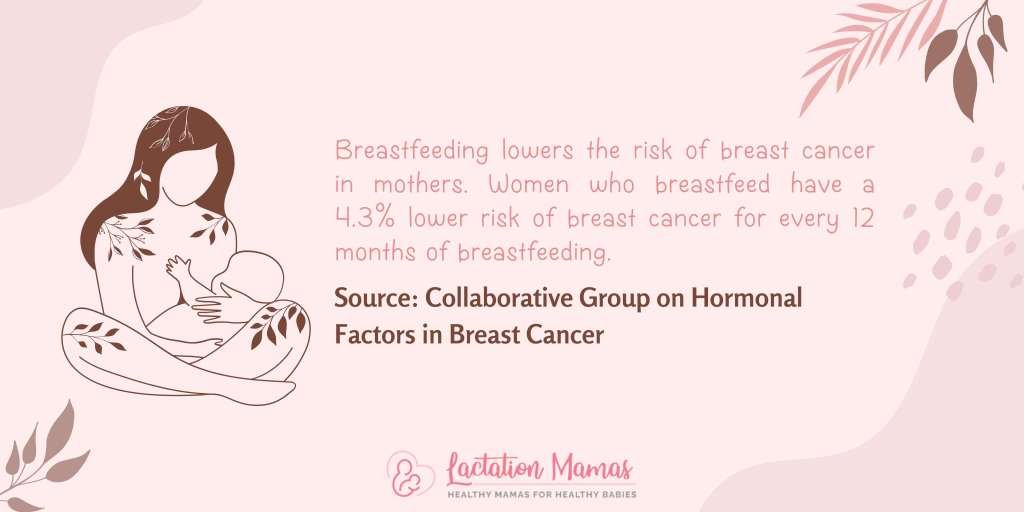
10 Amazing Breastfeeding Health Benefits for Mom
- Breastfeeding lowers the risk of breast cancer in mothers. Women who breastfeed have a 4.3% lower risk of breast cancer for every 12 months of breastfeeding. (Source: Collaborative Group on Hormonal Factors in Breast Cancer)
- Breastfeeding decreases the risk of ovarian cancer. Women who breastfeed for a cumulative duration of at least 12 months have a 27% lower risk compared to those who never breastfed. (Source: American Cancer Society)
- Breastfeeding helps the uterus contract and return to its pre-pregnancy size faster, reducing postpartum bleeding. It can shorten the overall recovery time. (Source: American College of Obstetricians and Gynecologists)
- Exclusive breastfeeding as a contraceptive method, known as the Lactational Amenorrhea Method (LAM), is about 98% effective during the first six months after birth when specific criteria are met. (Source: World Health Organization)
- Breastfeeding burns extra calories, aiding in postpartum weight loss. On average, breastfeeding mothers burn an additional 300-500 calories per day. (Source: Office on Women’s Health - U.S. Department of Health & Human Services)
- Breastfeeding is associated with a lower risk of developing type 2 diabetes. Each additional year of breastfeeding is associated with a 15-20% reduction in the risk of developing the disease. (Source: Centers for Disease Control and Prevention)
- Breastfeeding for a cumulative duration of at least 12 months is associated with a 10-15% reduced risk of developing cardiovascular disease compared to those who do not breastfeed or breastfeed for a shorter duration. (Source: Journal of the American Heart Association)
- Women who breastfeed for a total duration of at least 12 months have a 30-50% lower risk of developing rheumatoid arthritis compared to those who never breastfed. (Source: Annals of Rheumatic Diseases)
- Breastfeeding for a total duration of 12-24 months is associated with higher bone mineral density, reducing the risk of osteoporosis and fractures later in life. (Source: Journal of Women’s Health)
- Breastfeeding promotes feelings of relaxation and bonding, leading to improved emotional well-being and a reduced risk of postpartum depression. (Source: Journal of Midwifery & Women’s Health)
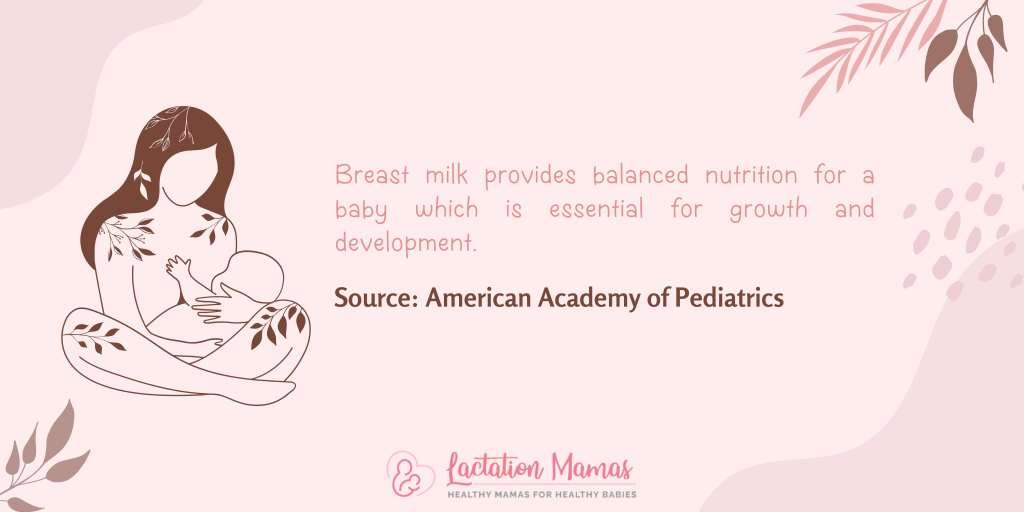
10 Amazing Breastfeeding Health Benefits for Baby
- Optimal Nutrition: Breast milk provides balanced nutrition essential for growth and development. (Source: American Academy of Pediatrics)
- Immune System Boost: Breast milk protects against infections, reducing the risk of respiratory and gastrointestinal illnesses. (Source: World Health Organization)
- Reduced Sudden Infant Death Syndrome (SIDS) Risk: Breastfeeding lowers the risk of SIDS, with any duration of breastfeeding offering protection. (Source: American Academy of Pediatrics)
- Enhanced Cognitive Development: Breast milk supports optimal brain development. (Source: Journal of Pediatrics)
- Lower Risk of Childhood Obesity: Breastfeeding reduces the likelihood of childhood obesity. (Source: World Health Organization)
- Digestive Health: Breast milk is gentle on the baby’s digestive system, reducing the risk of gastrointestinal issues. (Source: American Academy of Pediatrics)
- Protection Against Allergies and Asthma: Breastfeeding decreases the risk of allergies and asthma in children. (Source: American Academy of Allergy, Asthma & Immunology)
- Long-Term Health Benefits: Breastfeeding lowers the risk of chronic diseases like diabetes, celiac disease, and certain cancers. (Source: The Lancet)
- Emotional Bonding: Breastfeeding promotes emotional bonding between mothers and babies. (Source: WebMD)
- Customized Nutrition: Breast milk adapts to the baby’s needs, providing personalized nutrition. (Source: American Academy of Pediatrics)

10 U.S. Trends in Breastfeeding Statistics
- Among infants born in the U.S. in 2019, most (83.2%) started out receiving some breast milk, and 78.6% were receiving any breast milk at 1 month. At 6 months, 55.8% of infants received any breast milk and 24.9% received breast milk exclusively(Source: Centers for Disease Control and Prevention, CDC)
- Exclusive Breastfeeding at 3 Months: Approximately 46.9% of infants in the US were exclusively breastfed at 3 months of age in 2020. (Source: CDC)
- Exclusive Breastfeeding at 6 Months: Around 25.8% of infants in the US were exclusively breastfed at 6 months of age in 2020. (Source: CDC)
- Breastfeeding at 12 Months: About 39.4% of infants in the US were still breastfeeding at 12 months of age in 2020. (Source: CDC)
- Breastfeeding Disparities: African American infants have the lowest rates of breastfeeding initiation, with 69.3% being breastfed initially, compared to 83.7% for all infants in the US. (Source: CDC)
- Rooming-in Practices: In US hospitals, 74.6% of healthy, full-term infants roomed in with their mothers in 2020, promoting breastfeeding and maternal-infant bonding. (Source: CDC)
- Baby-Friendly Hospitals: As of 2020, 28.6% of US hospitals have achieved the Baby-Friendly designation, indicating adherence to breastfeeding-friendly practices. (Source: CDC)
- Maternity Leave: Only 19% of US workers have access to paid family leave, which can impact the duration and success of breastfeeding. (Source: National Partnership for Women & Families)
- Workplace Support: Approximately 59% of employed mothers in the US have access to workplace breastfeeding support, including break time and private space for expressing breast milk. (Source: CDC)
- Breastfeeding Duration: A study published in the Journal of Pediatrics found that in the United States, the median duration of any breastfeeding is 14.0 weeks, while the median duration of exclusive breastfeeding is 7.0 weeks. (Source: Journal of Pediatrics)
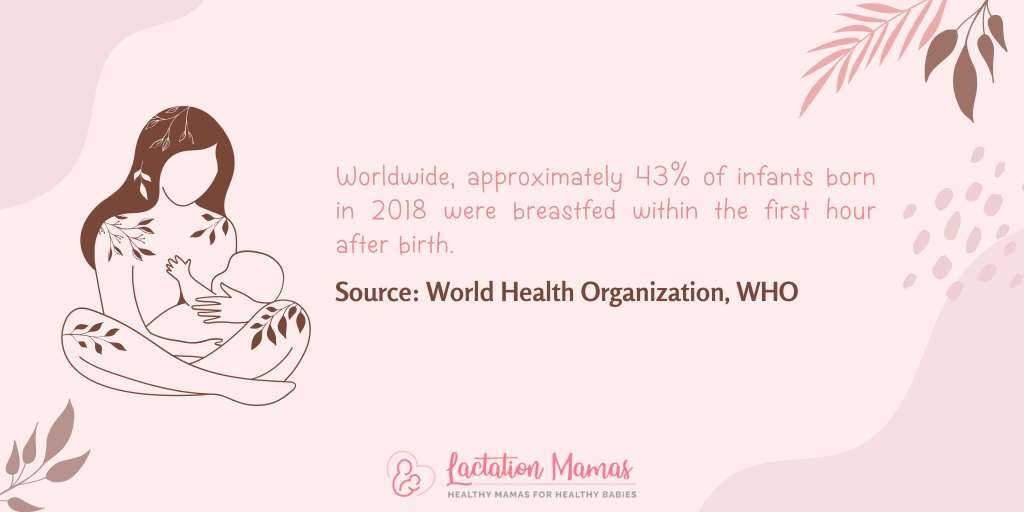
10 World Trends in Breastfeeding Statistics
- Breastfeeding Initiation: Worldwide, approximately 43% of infants born in 2018 were breastfed within the first hour after birth. (Source: World Health Organization, WHO)
- Exclusive Breastfeeding at 6 Months: Only about 44% of infants under 6 months of age worldwide are exclusively breastfed. (Source: WHO and UNICEF)
- Continued Breastfeeding at 1 Year: Globally, around 70% of women continue to breastfeed their infant for at least one year, by two years of age, breastfeeding rates decline to 45%. (Source: WHO and UNICEF)
- Early Initiation of Breastfeeding: In low- and middle-income countries, approximately 65% of infants initiate breastfeeding within the first hour after birth. (Source: WHO)
- Breastfeeding Disparities: There are significant disparities in breastfeeding rates between regions and countries. In high-income countries, the rate of exclusive breastfeeding at 6 months is only 23%. (Source: WHO and UNICEF)
- Breastfeeding Practices in Africa: In sub-Saharan Africa, 52% of infants are exclusively breastfed until 6 months of age. (Source: WHO)
- Breastfeeding Practices in Europe: In Europe, 34% of infants are exclusively breastfed at 6 months of age. (Source: WHO)
- Global Breastfeeding Rates: In 2019, the global breastfeeding rate for infants under 2 years of age was 45%. (Source: WHO and UNICEF)
- Baby-Friendly Hospitals: As of 2023, there are over 22,000 Baby-Friendly Hospitals and Maternity Units in 150 countries worldwide, implementing practices that support breastfeeding. (Source: Baby-Friendly Hospital Initiative, WHO and UNICEF)
- Maternity Leave: Maternity leave policies vary widely across countries. Some countries, such as Sweden and Norway, provide extensive paid maternity leave, while others have limited or no provisions. (Source: International Labour Organization)
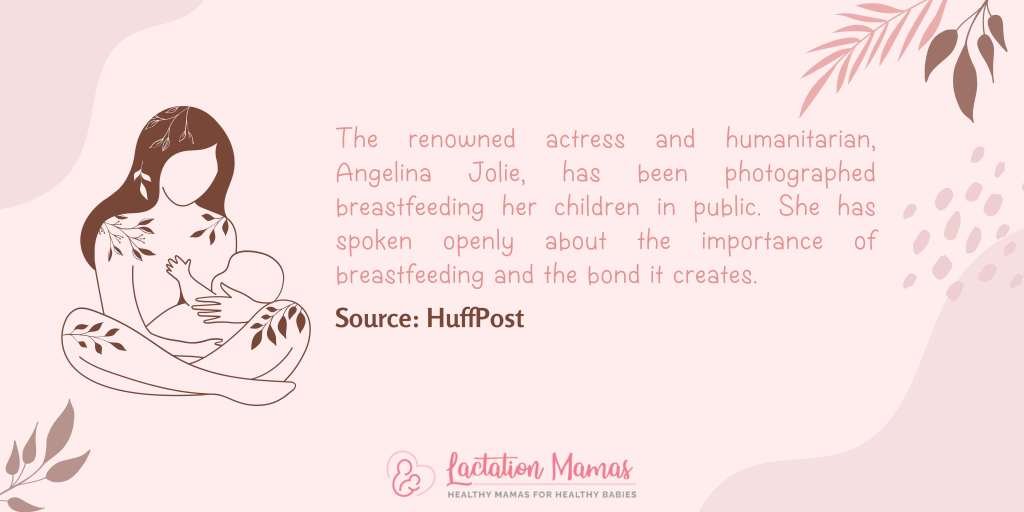
10 Famous Mothers Who Have Breastfed
- Angelina Jolie: The renowned actress and humanitarian, Angelina Jolie, has been photographed breastfeeding her children in public. She has spoken openly about the importance of breastfeeding and the bond it creates. (Source: HuffPost)
- Gwen Stefani: The singer and fashion icon Gwen Stefani has openly breastfed her children. She has been photographed breastfeeding her youngest son while sitting on a park bench. (Source: Daily Mail)
- Pink: The Grammy Award-winning singer Pink has been vocal about her breastfeeding journey and has shared photos of herself nursing her children on social media. She has advocated for normalizing breastfeeding. (Source: People)
- Miranda Kerr: The Australian model Miranda Kerr has publicly discussed her breastfeeding experiences and shared photos of herself breastfeeding her children. She has expressed the benefits of breastfeeding for both mother and child. (Source: Elle Australia)
- Gisele Bündchen: The supermodel Gisele Bündchen has spoken openly about her decision to breastfeed her children. She has shared photos of herself breastfeeding and emphasized the importance of breastfeeding for the health and well-being of infants. (Source: Today)
- Mayim Bialik: The actress Mayim Bialik, known for her roles in “Blossom” and “The Big Bang Theory,” has been an advocate for breastfeeding. She has breastfed her own children and has written books on parenting and breastfeeding. (Source: The Washington Post)
- Natalia Vodianova: The Russian supermodel Natalia Vodianova has openly breastfed her children and has been a strong supporter of breastfeeding rights. She has participated in breastfeeding awareness campaigns and events. (Source: Glamour)
- Alyssa Milano: The actress and activist Alyssa Milano has openly breastfed her children and has shared photos of herself nursing on social media. She has been a vocal advocate for normalizing breastfeeding and combating the stigma around it. (Source: CNN)
- Alanis Morissette: The singer-songwriter Alanis Morissette has openly breastfed her children and has shared breastfeeding photos on social media. She has discussed her breastfeeding journey and the emotional connection it creates. (Source: People)
- Olivia Wilde: The actress and filmmaker Olivia Wilde has breastfed her children and has been photographed nursing in public. She has expressed her support for breastfeeding mothers and advocated for breastfeeding rights. (Source: The Huffington Post)
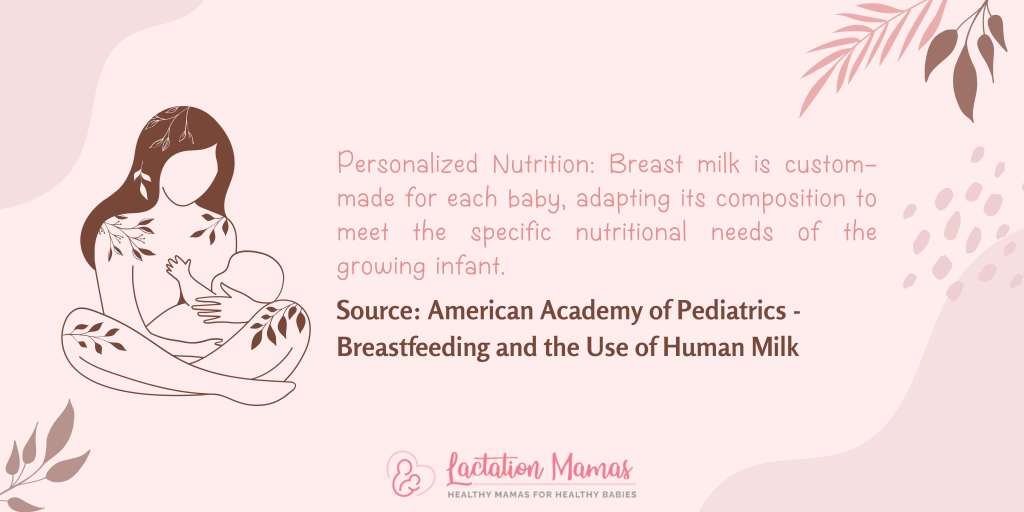
10 More Fun Breast Milk Facts
- Liquid Gold: Breast milk is often referred to as “liquid gold” due to its remarkable composition and benefits for infants. (Source: American Academy of Pediatrics - Breastfeeding and the Use of Human Milk)
- Immune Superpowers: Breast milk is packed with antibodies and immune factors that help protect babies from infections, allergies, and illnesses. (Source: World Health Organization - Breastfeeding)
- Colostrum Magic: The first milk produced after birth, called colostrum, is like a potent superfood for newborns, providing essential nutrients and immune protection. (Source: American Pregnancy Association - Colostrum: Your Baby’s First Superfood)
- Personalized Nutrition: Breast milk is custom-made for each baby, adapting its composition to meet the specific nutritional needs of the growing infant. (Source: American Academy of Pediatrics - Breastfeeding and the Use of Human Milk)
- Growth Elixir: Breast milk contains growth factors that promote optimal development, helping babies reach their full potential. (Source: The Journal of Pediatrics - Human Milk Composition: Nutrients and Bioactive Factors)
- Brain Boosting: Breast milk is rich in essential fatty acids, such as DHA, which are crucial for brain development and cognitive function. (Source: American Academy of Pediatrics - Breastfeeding and the Use of Human Milk)
- Digestive Superhero: Breast milk is easily digested by infants, reducing the risk of digestive issues and discomfort. (Source: American Academy of Pediatrics - Breastfeeding and the Use of Human Milk)
- Taste Adventures: The flavors of breast milk change depending on what the mother eats, introducing infants to a variety of tastes and shaping a baby’s palate early on. (Source: Journal of Pediatric Gastroenterology and Nutrition - The Flavors of Mother’s Milk: A Comprehensive Review)
- Natural Pain Relief: Breast milk has natural analgesic properties and can provide comfort and pain relief to babies during procedures or when they are unwell. (Source: Journal of Perinatology - Human Milk for Pain Relief in Preterm Infants: A Randomized Controlled Trial)
- Magical Bonding: Breastfeeding creates a unique and intimate bond between mother and baby, fostering emotional connection and promoting overall well-being. (Source: American Academy of Pediatrics - Breastfeeding and the Use of Human Milk)
We hope you enjoyed this fun list of breastfeeding facts and statistics as much as we enjoyed putting it together! It’s always a wonderful reminder of why breastfeeding is an amazing superpower that mamas get to experience in motherhood.
